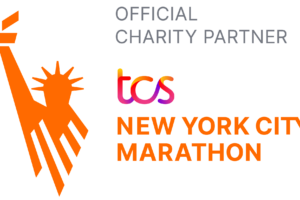The National Blood Clot Alliance (NBCA), in response to the Surgeon General’s Call to Action to Prevent Deep Vein Thrombosis and Pulmonary Embolism, has conducted a Survey to benchmark awareness of DVT/PE among the general public and several groups of patients at increased risk of DVT/PE, including oncology patients. Results of this large Survey are being shared with key interest groups as they become available. Earlier this month, NBCA released survey information at the American Society of Hematology Meeting, that included key findings of particular interest to hematologists, namely:
A. DVT/PE Awareness and Knowledge Gaps in the General Public
B. DVT/PE Awareness and Knowledge Gaps in the General Public and At-Risk Oncology Patients
A. DVT/PE Awareness and Knowledge Gaps in the General Public
Deep vein thrombosis (DVT) and pulmonary embolism (PE) impose a major public health burden in the U.S., affecting an estimated 350,000 to 600,000 individuals and accounting for ~100,000 deaths here annually, according to The Surgeon General’s Call to Action To Prevent DVT and PE.
Methodology, Survey Target
In response to this Call to Action, the National Blood Clot Alliance (NBCA), a national, community-based, non-profit organization dedicated to the prevention, diagnosis, and treatment of thrombosis and thrombophilia, conducted a survey to benchmark DVT/PE awareness among the general public. Little information about the public’s knowledge of venous thromboembolism (VTE) is found in the literature, making this one of the most comprehensive, relatively large surveys of its kind. This DVT/PE awareness survey was conducted in among a representative cross-section of 500 adults, >20 years, participating in online research panels.
Key Findings
- Among all respondents surveyed, just 21% said that they had heard of a medical condition called DVT (unaided), and, among this group (n=104), 86% correctly identified it as “deep vein thrombosis” on an aided checklist.
- Among those respondents who had not heard of a DVT or who had made an incorrect checklist selection (n=411), when DVT was identified for them as “deep vein thrombosis,” 29% then said they knew what it was.
- Among all respondents, just 16% said that they had heard of a medical condition called PE, and, among this group (n=80), 83% identified it correctly as “pulmonary embolism” on an aided checklist. Awareness of specific DVT risk factors and DVT/PE signs/symptoms was low.
- Results of this survey show that the medical lexicon poses substantial barriers: only 23% of all respondents reported to know what thrombophilia means and just 9% had heard of VTE. Conversely, 8 in 10 of all respondents said that they do know what a blood clot is, and virtually all respondents (98%) said that they believe blood clots can be life-threatening. The leading factors respondents said they believe are risks for causing blood clots included: family history of blood clots (73%), major trauma (71%), major surgery (69%), and being bedridden (68%), while <60% of respondents mentioned other risk factors, such as cancer, chemotherapy, pregnancy, hormone therapy and birth control pills, or age.
Clinical, Public Health Imperatives
The public health impact of DVT/PE is significant, while DVT/PE public awareness, including awareness of important DVT/PE risk factors and signs/symptoms, is disproportionately low. These survey data support recommendations in the Surgeon General’s Call to Action, underscoring the urgent need for education, especially the use of simplified terms, to close gaps in DVT/PE public awareness/knowledge, and can help guide educational initiatives relative to DVT/PE that may contribute to decreased morbidity and mortality.
B. Deep Vein Thrombosis and Pulmonary Embolism Awareness and Knowledge Gaps in the General Public and At-Risk Oncology Patients
Deep vein thrombosis (DVT) and pulmonary embolism (PE) affect up to 600,000 individuals and account for ~100,000 deaths in the U.S. each year, according to The Surgeon General’s Call to Action To Prevent Deep Vein Thrombosis and Pulmonary Embolism. Oncology patients, particularly those who are hospitalized or undergo chemotherapy, are at increased risk for DVT/PE. Mortality is greater among patients with cancer and venous thromboembolism (VTE) than among those with cancer alone.
Survey Methodology, Targets
In response to the Surgeon General’s Call to Action, the National Blood Clot Alliance (NBCA), a national, community-based, non-profit organization dedicated to the prevention, diagnosis, and treatment of thrombosis and thrombophilia, conducted a survey to benchmark DVT/PE awareness among the general public and several at-risk patient groups, including oncology patients. The literature contains little information about at-risk patient knowledge, and almost no information about general public knowledge of VTE, making this the first, large survey of both public and at-risk patient awareness of DVT/PE. The survey was conducted in November 2009, among a representative cross-section of 500 adults, >20 years, participating in online research panels. For comparison, the identical survey was conducted among a sample of 500 adults, >20 years, screened from an online research panel, who had received a cancer diagnosis or experienced recurrence of cancer within the past 6 months, or who were on active cancer treatment. Evaluations comparing survey responses provided by oncology patients who, in connection with their treatment, did require a hospital stay versus those who did not require a hospital stay showed no statistically significant differences in DVT/PE awareness between the two subgroups.
Key Findings
- Among all oncology patients surveyed, 24% said that they had heard of a medical condition called DVT, compared to 21% of the general public. Among all respondents who said that they knew what a DVT was (unaided) or who were able to correctly identify DVT on an aided checklist, 61% of oncology and 53% of national respondents said they could name DVT risk factors. The most frequently mentioned DVT risk factor was “sitting for a long time” among both the oncology (45%) and national (28%) samples. Among oncology patients who could name DVT risk factors (n=155), 8% named surgery, 1% named cancer treatment. Among national respondents who could name DVT risk factors (n=109), significantly more (79%) said they could name DVT signs/symptoms compared to oncology respondents (63%) who said the same.
- While not statistically significant, the national sample did show greater recognition of certain DVT signs/symptoms: skin redness/discoloration, 41% national, 21% oncology; leg swelling, 50% national, 31% oncology; and, leg pain, 37% national, 27% oncology. PE awareness was low among both groups, with 15% of all oncology and 16% of all national respondents saying that they had heard of PE.
- Of those who said they knew what a PE was (unaided) or identified it correctly from an aided checklist, about one-third of both groups said they could name PE signs/symptoms, with “breathing difficulties” cited most frequently by oncology (69%) and national (73%) respondents. Significantly fewer oncology patients (28%) mentioned chest pain/tightness as a PE sign/symptom, compared to the national sample (57%).
- About 8 in 10 oncology and national respondents said that they did know what a blood clot is, and virtually all respondents (98%) recognized blood clots as life threatening.
Clinical, Public Health Imperatives
Despite increased risk, oncology patients demonstrated no greater awareness of DVT/PE than the general public. DVT/PE education, utilizing interventions identified in the Surgeon General’s DVT/PE Call to Action, should target the general public, with special emphasis on at-risk oncology patients to fill gaps relative to increased DVT/PE risks and signs/symptoms. Terms should be further simplified for future public awareness and patient education initiatives.
The National Blood Clot Alliance DVT/PE Survey Was Made Possible by a Grant from Ortho-McNeil, Division of Ortho-McNeil-Janssen Pharmaceuticals, Inc.





